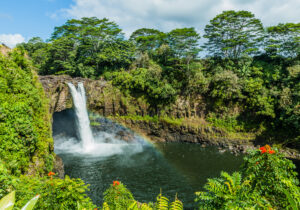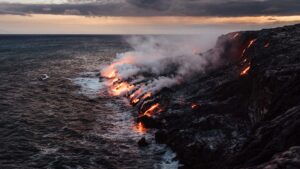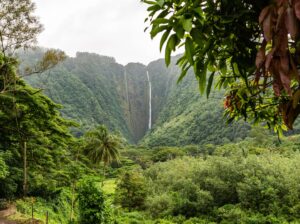Do we get to see the Hawaiʻi lava flow at Kilauea Volcano?
Often times we hear guests, potential customers, and those who have never been to the Big Island ask, “Do you see lava at Kilauea Volcano?”
Great question! For a long time, before even seeing Kilauea Volcano for the first time, we wondered the same thing!
When we think of volcanoes, we often think of that grade school science experiment with baking soda and vinegar. Simply pour vinegar into the baking soda conic crater and… instant eruption!
Kilauea Volcano’s eruptions are far more complicated than that of course, but over the course of this article, we would like to talk about just what exactly is happening at the volcano. We’ll talk about the Hawaiʻi lava flow and about simple concepts: What’s lava? Is Magma the same thing as lava and what’s really happening at Kilauea?
Can you see the Hawaiʻi lava flow on a volcano tour?
We’re often asked about whether we will see lava while on a volcano tour. Of course we see hard, rocky, braided lava everywhere on the Big Island – it’s kind of our trademark. So maybe a better question should be, “Are we going to see flowing lava?” or better yet, “Are we going to see red hot molten lava flowing?”
Our answer always is, “Boy, we sure hope not!” That would mean we were near some pretty dangerous terrain and the earth might actually suck us in!
Molten lava is usually measured at nearly 2000 degrees Fahrenheit or 4 times hotter than your kitchen oven! No thanks. Sure, it would be great to see Hawaiʻi lava flow at a distance, but we actually have no interest in seeing lava up close. In fact, many photographers, hikers, and visitors have had terrible accidents with lava flows at the park. Unknowingly, some even walked on hard lava thinking the ground was safe only to find out that there were subterranean lava flows directly below them! Oh, so that’s why your shoes were melting…

Interesting facts about lava in Hawaiʻi
What we love seeing is older, harder formations of lava that created new land. There are bubble spatter formations, lava trees, and plenty of lava tubes and caves.
Thurston Lava Tube is one of those older tubes that is big enough to walk through (just try to not hum the Indiana Jones theme song as you enter…). There are vast expanses of new land at the edge of Kilauea that have been created in just the last few years.
Also, Kilauea has been erupting since 1983! It’s main crater, Puu Oo Crater, continues to be supplied with new lava right this very moment! The only way to see Puu Oo Crater and it’s occasional surface flows and skylights is by helicopter. Call Blue Hawaiʻian or Paradise Helicopters; they’re both excellent.
The magma chamber beneath is replenishing the intricate system of lava tubes right below your feet – deep down but it’s still erupting! That giant plumbing system just below the surface is so unpredictable and volatile that it will keep those scientists busy for a LONG time.
Kilauea’s summit, or Kilauea Caldera, is really what’s most exciting these days! Inside the caldera is a deeper crater known as Halemaumau Crater. It houses a huge well of bubbling lava and spews out smoke and ash 24/7 and it shows no signs of slowing down. At night, the glow of the lava can be seen from Jaggar Museum as well as various other lookouts near the caldera. You won’t have to do dangerous hikes, risk death, or even walk that far; Halemaumau is visible from the parking lot and can be accessed by anyone day or night.
That’s why we love our jobs so much; showing off the awesome power of Kilauea and the beautiful nightly display of Madame Pele!
Keeping up with the Hawaiʻi lava flow
Every day we see new and exciting things happening at Hawaiʻi Volcanoes National Park. There’s even a daily lava and eruption update the Hawaiʻi Volcanoes Observatory puts out on their website.
Those who study volcanoes, volcanologists, are right on top of the action at their office located right behind the Jaggar Museum at Kilauea’s summit. They constantly monitor the Hawaiʻi lava flow: eruptions, the inflation and deflation of Kilauea’s surfaces, and advise civil defense should there need to be shutdowns, road-closures, or evacuations.
Because we’re into that sort of thing, we have it bookmarked. If you’re also into it, check them out here.
Another cool website to visit is the HVO’s live webcams located throughout the park. This is a great way to keep up with the the latest updates on the Hawaiʻi lava flow and what’s happening at all the major craters and calderas within the park.
Aloha!




